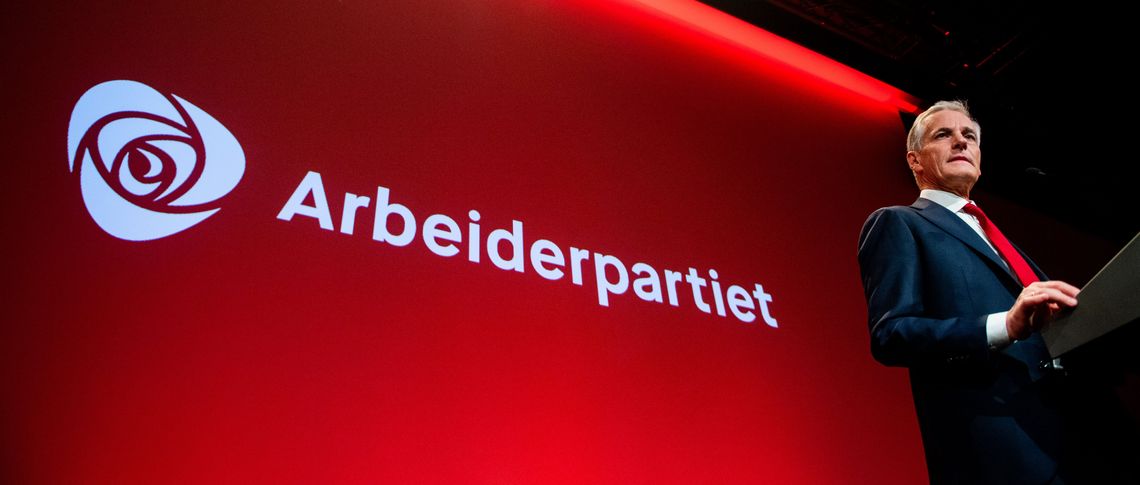The Labour Party’s Jonas Gahr Støre will be Norway’s next prime minister. For the first time in 20 years Sweden, Norway, Denmark, and Finland all have a social democrat as their head of government – and the same may apply to Germany after its upcoming elections. Seen together, this constitutes a paradigmatic shift in Northern Europe and the US toward the centre-left.
The final results of the Norwegian elections show a clear rejection of continued rule by the right. The opposition left-wing and centre-left parties received 100 parliamentary seats out of a total 169. After eight years of Erna Solberg’s Conservatives in government, a change of guard was to be expected. But the scale of this shift to the left was unexpected: the three former coalition partners – the Labour Party, the Socialist Leftist Party and the Centre Party – got a total of 89 seats. Polls had been often showing the trio below the 85-seat threshold needed for a majority in the Norwegian Storting.
Støre and the Labour Party clearly prefer a three-party majority coalition as the outcome of the forthcoming coalition talks. However, the two smaller parties have their reservations, so the outcome is by no means certain. The two realistic alternatives to this majority coalition are a minority government with Labour and the Centre Party, or just Labour on its own.
The election’s three main issues
Norway currently seems to be on the way out of the Covid-19 pandemic – and it has been left relatively unscarred in terms of mortality, vaccinations, and unemployment. The handling of infection control has been largely de-politicised and handed over to bureaucrats. For these reasons, the pandemic didn’t play a big role during the election campaign other than indirectly. Instead, it’s three policy areas in particular that are important to understand the outcome of these elections: climate change, social inequality, and rural-urban disparities.
First, the IPCC report in late August made climate change the major issue in the media’s election coverage. The Norwegian climate debate is currently focused mostly on the petroleum industry and, in particular, on where the red line for further exploration should be drawn. These discussions are cutting acrsoss the traditional coalitions both of the left and the right. Moreover, there has been a left-right conflict over how exactly to achieve a just green transition.
The previous right-wing government implemented centralising reforms of Norwegian municipalities, regions, police stations, and more.
Second, growing social inequalities in Norway have been gaining more attention over the last couple of years, with the Covid-19 pandemic both boosting inequalities and highlighting existing ones – in the labour market, in the welfare system, in wealth. The current campaign has been dominated by discussions over how to adjust the tax system to tackle inequality and whether Norway’s already existing wealth tax is hurting businesses.
Third, the distribution of power, respect, and goods along the rural-urban axis has always played a major role in Norwegian politics.The previous right-wing government implemented centralising reforms of Norwegian municipalities, regions, police stations, and more. This contributed to a meteoric rise of the Centre Party – a party with a convincing narrative on rural issues and a charismatic leader. The Centre Party grew from 5,5 per cent at the start of the Conservatives’ first term in 2013 to 13,5 per cent this time.
Labour’s profile
The Labour Party, on the other hand, has tried to sharpen its profile since the 2017 defeat, captured best by its 2021 slogan ‘It’s the ordinary people’s turn now’. It describes the core of what the party stands for: an interest party for wage earners. In fact, that’s what the party was formed for back in the 19th century. And through a formalised cooperation with the trade unions in the LO Confederation, it continues to be the backbone of the party structure until today.
As a party representing the interests of wage earners, the party’s manifesto gave labour market issues high priority, such as strengthening the right to a permanent job or incentivising union membership. More importantly, the strategic reflections after the party’s defeat at the last election generated a change in how tax policy is structured and communicated. One reason for Labour’s loss was the promise of a €1,5bn total tax rise – though it was unclear who was going to pay what. In the 2021 election, Labour instead promised a tax cut for workers earning less than €74,000 a year and a rise in taxes on wealth.
Moreover, the Labour Party proposed several other policies to reduce economic inequality, like a wage cut for public sector CEOs and higher taxes on the most expensive electric cars.
The comprehensive Norway-EU EEA agreement, however, which gives Norway access to the European single market, is contested on the left.
Apart from sharpening its profile, the party has spent time and energy to formulate sensible policies on issues that divide Labour voters. For example, on immigration, a committee at its 2018 Congress managed to unite the party behind further agreements with countries outside Europe, more help to refugees where they come from, and more UN quota refugees relative to their number at the Norwegian border.
The future government’s likely agenda
Now, the coalition talks will define what policies exactly will be implemented. There are some contentious areas, of course. The discussions among and within the left-wing parties over the petroleum industry, and particularly over the future of oil exploration, will be tough. As the parties have differing positions, it is unclear what exactly the outcome will be.
On defence and security policy, there has traditionally been a high degree of consensus between the big parties. Norway will remain a stable partner of its European and transatlantic allies after this election too. The comprehensive Norway-EU EEA agreement, however, which gives Norway access to the European single market, is contested on the left: both the Socialist Left Party and the Centre Party are against the agreement. But as continued Norwegian membership is a top priority for the Labour Party, it is very unlikely that a centre-left government will agree on exiting the EEA.
At the same time, there is a substantial overlap between the different parties’ manifestos. Most likely, some of the top priorities will be:
First, tackling social inequality with higher taxes on capital, the strengthening of workers’ rights and better working conditions. Moreover, new welfare reform initiatives – like free after school programmes, free school lunch, or free dental care – will become part of the mix.
Second, tackling climate change with high ambitions for domestic emission cuts that all parties on the left agree on. This will be achieved by a more active state in driving industrial policy, shaping markets and promoting green industries.
Third, tackling rural-urban disparities by stopping centralising reforms initiated by the last government.
What’s certainly clear is that, after eight years of right-wing government, the new political majority in Norway after this election generates new optimism on the left.






